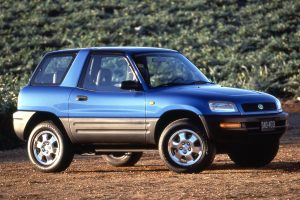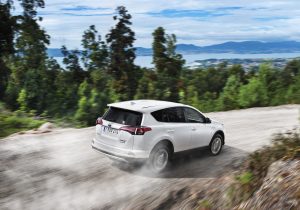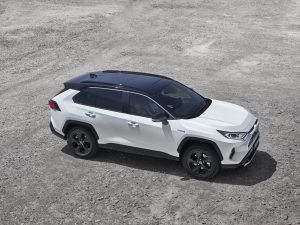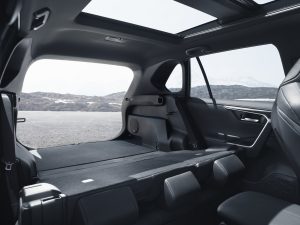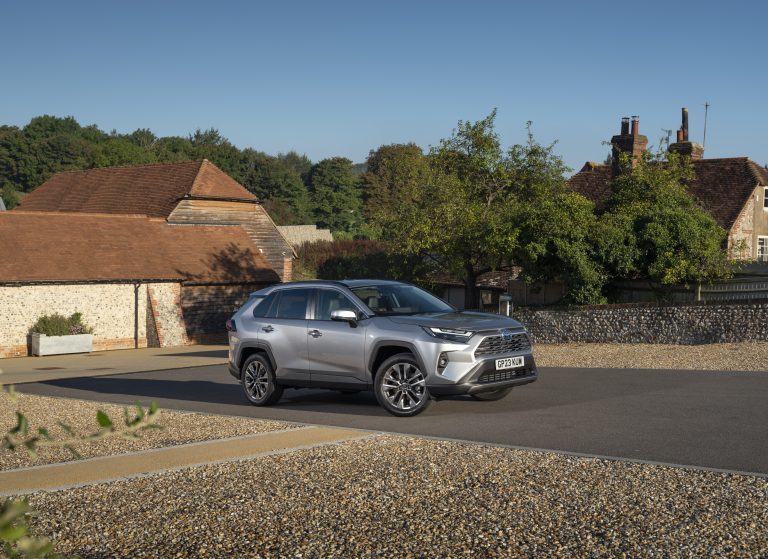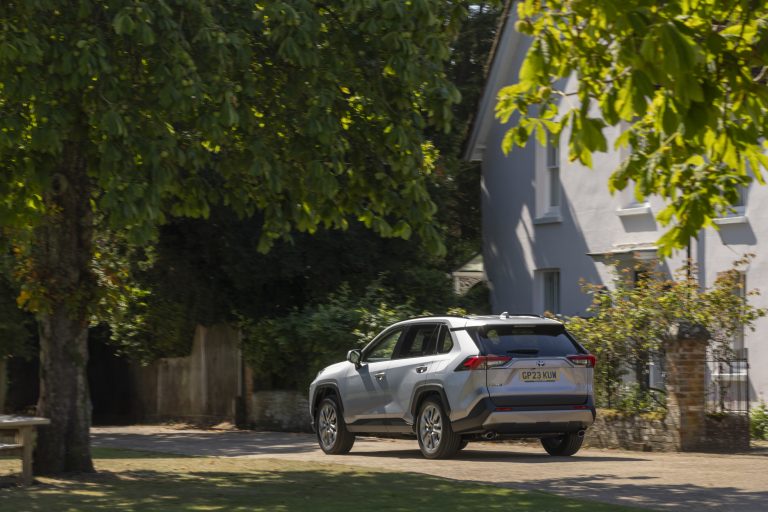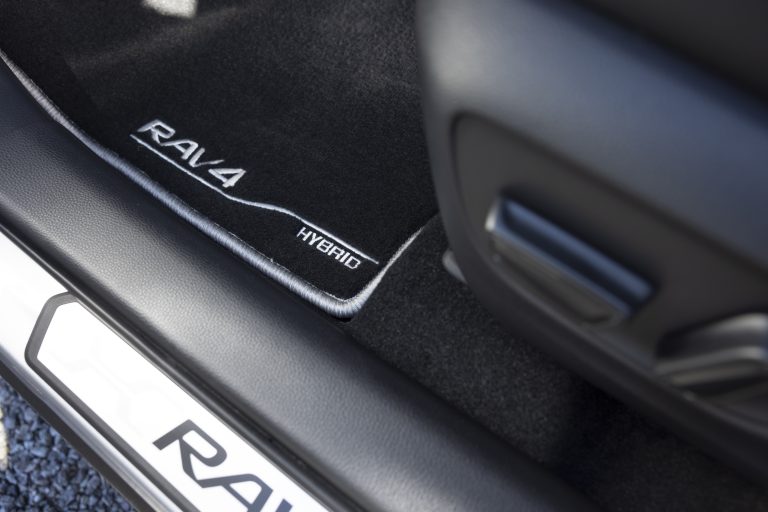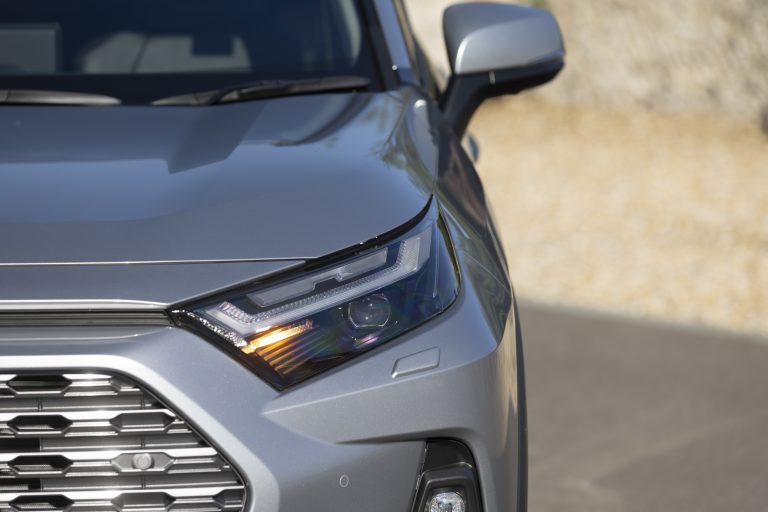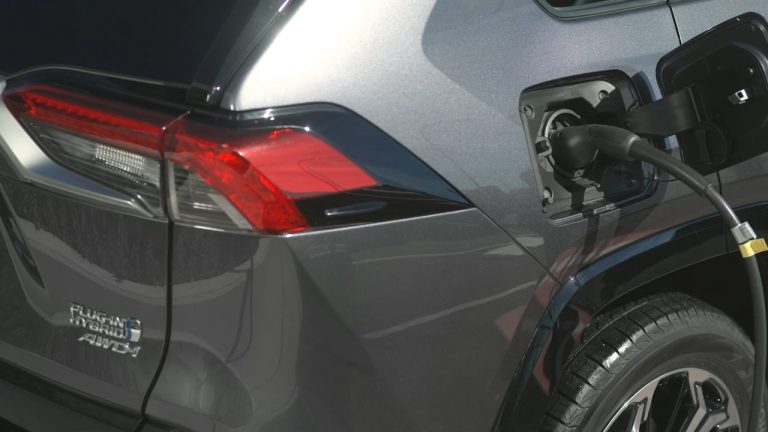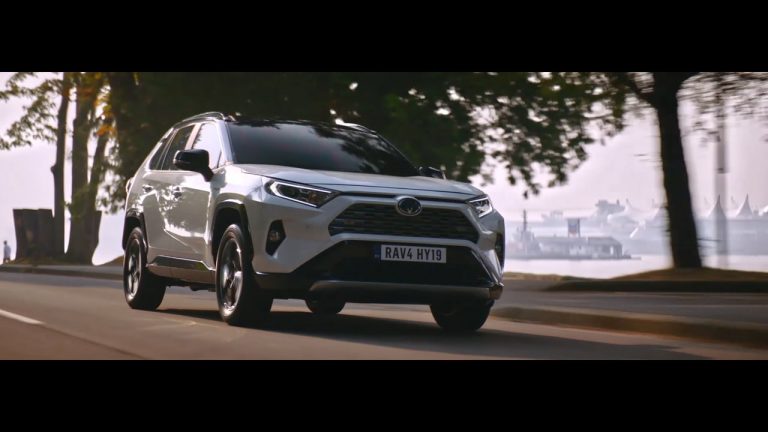Toyota RAV4: A pioneering original for 30 years
- Toyota’s ground-breaking model founded a new segment for compact recreational SUVs
- Three decades later, it remains a dominant model in its class worldwide
- Across five generations, RAV4 has evolved from a compact and agile trend setter to delivering class-leading practicality and comfort
- More than 14 million global sales since 1994
The Toyota RAV4 is celebrating three decades since it reshaped the automotive landscape, during which time it has become a global SUV icon.
In March 1994, the Geneva Motor Show hosted the launch of a new type of vehicle: a compact, all-wheel drive SUV based on a monocoque body. The Toyota RAV4 was an original, being agile, versatile and designed to meet the demands of modern life. The term “SUV” was unfamiliar at the time, but RAV4 set the trend from the outset, receiving an overwhelmingly positive response from media and customers.
The designers were faithful to the original vision presented by Toyota’s first RAV-FOUR concept car, revealed at the 1989 Tokyo Motor Show. The priorities were generous space within a compact, sporty and distinctive body design and a raised seating position, bringing more of the road into view and generating a more confident, secure driving experience. Strong off-road capabilities should combine with performance and road comfort, while meeting the highest safety standards and environmental performance. Based on those principles, RAV4 has consistently reinvented itself and raised the bar in the recreational SUV segment through five generations so far.
Innovation has been at the heart of its development, witnessed by the early adoption of efficient new drivetrain technologies. As early as 1997, RAV4 expressed Toyota’s commitment to exploring new technologies to reduce environmental impact when a battery electric version was launched in selected markets.
Later came the introduction of Toyota’s class-leading hybrid (HEV) technology into the SUV segment with the third generation in 2016, complementing the established line-up of petrol and diesel engines. A plug-in hybrid (PHEV) entered the range in 2020, building Toyota’s multi-path technology strategy towards achieving carbon neutrality. This commits to offering a range of powertrains appropriate for different customer needs, market conditions and local infrastructure.
These electrified options also enhanced the RAV4 driving experience, adding the quiet, smooth performance of hybrid together with higher performance from more powerful motors. Meanwhile, through the innovative use of new platforms and updated suspension technology, Toyota has produced a more confident, stable, and rewarding ride with each generation.
Progress during the last 30 years has gone beyond performance and efficiency to increase practicality as well. This includes generous luggage capacity – when the rear seats are in use or folded down for extra space – cabin comfort and the provision of increasingly sophisticated onboard multimedia systems.
In common with other Toyota models, RAV4 has continually benefited from the advanced safety and driver assistance systems provided as standard in successive generations of Toyota Safety Sense, helping drivers avoid an ever-wider range of common road accident risks.
By staying true to its original philosophy and anticipating to the changing needs of customers, RAV4 has remained an icon among SUVs and become a sales success story across the world. In 2023, cumulative sales passed the 14 million mark, with more than 2.5 million of these being to European customers. The UK remains one of the model’s largest markets in Europe.
The beginning
The ideas behind the RAV4 (Recreational Active Vehicle with 4-wheel drive) were first expressed in the RAV-FOUR concept car at the 1989 Tokyo Motor Show, indicating Toyota’s interest in creating a compact all-wheel drive model. This was just a design study, with none of the detail required for an actual development model, but it gained an enthusiastic welcome from the public. In 1991, the project was given the green light and development work began.
First generation, 1994 – 2000
Toyota’s designers created an impactful, fun new look for the original RAV4, breaking with convention by giving it eye-catching curves and lines. A rear mounted spare wheel hinted at its off-road capabilities but the fresh new style was well-suited to both rural and urban settings. In its original form, the RAV4 was a compact two or three-door model, measuring just 3.69m long. Power came from a 127bhp 2.0-litre petrol engine, mounted transversely, while the transmission provided permanent all-wheel drive. Innovations that were destined to become the norm included a lightweight monocoque body and independent rear suspension. RAV4’s high driving position provided greater visibility while its compact size made it easy to manoeuvre. Its nimble handling and passenger comfort were more like a hatchback than an AWD vehicle.
In 1996, the range was expanded to include a five-door (measuring 4.1m long) and the option of front/two-wheel drive while a three-door soft-top followed. In 1997, a front-wheel-drive battery electric (BEV) version went on sale in selected markets. This was produced a modest 45kW (63bhp), with nickel-metal hydride batteries installed under the floor, and had an estimated range of approximately 120 miles.
Second generation, 2000 – 2006
A new millennium brought a second generation RAV4. A new platform, new suspension and full-time AWD created an energetic but comfortable ride both on road and off while interior comfort was enhanced by a more premium feel. New packaging, a longer seat sliding range and various rear seat configurations created a functional and comfortable cabin. A step towards sustainability came thanks to extensive use of easily recycled Toyota Super Olefin Polymer (TSOP) and recycled soundproofing products. Both three and five-door versions were slightly longer, 5.5cm and 4cm respectively. Two petrol engines were offered: 121bhp 1.8 litre and 148bhp 2.0 litre units. The full-time AWD adopted a centre limited-slip differential, while customers could specify a Torsen rear differential as a factory option. In 2001, diesel power was offered in the RAV4 for the first time via a 2.0 litre D-4D direct injection unit with 114bhp.
Third generation, 2006 – 2012
For its third generation, RAV4 grew and presented a more sophisticated appearance. It also became exclusively a five-door vehicle, reflecting changes in customer preferences and requirements. Based on an all-new platform, it measured 19cm longer overall, while a long-wheelbase version was also manufactured for sale in the United States and other markets. The model marked the debut of a new Toyota all-wheel drive system with an electronically controlled coupling that operated automatically, according to the vehicle’s speed, throttle operation, steering angle and G-forces. RAV4’s handling capabilities were further developed with the first application of Downhill Assist Control and Hill-start Assist Control. Engine choice was extended as well, with 2.0, 2.4, 2.5 and 3.5 litre petrol units, plus a new 2.2 litre diesel.
Fourth generation, 2013 – 2018
The fourth generation RAV4 saw a standard wheelbase introduced for the vehicle globally. The vehicle’s length grew again, by 23.5cm, which contributed to a 47 per cent increase in luggage room compared to its predecessor. All-new suspension was designed to enhance ride comfort and driver engagement without sacrificing stability. More advanced AWD technology was introduced with a new intelligent Dynamic Torque Control system and the addition of two new functions: cornering control and a Sport driving mode.
The powertrain choice originally consisted of 2.0 and 2.5-litre petrol and 2.0 and 2.2-litre diesel engines but in 2016 RAV4 underwent its most significant development yet. A full hybrid version, Toyota’s first hybrid compact SUV, was introduced. This offered total system power of 194bhp and E-Four electronic all-wheel drive. As well as delivering the performance drivers would expect from Europe’s most powerful RAV4 to date, the hybrid powertrain achieved class-leading fuel consumption – aided by superior aerodynamics – and low CO2 emissions.
Fifth generation, 2018 to date
The fifth generation RAV4 was launched in Europe at the start of 2019 and a year later helped the model reach a global cumulative sales milestone of 10 million units. Powerful styling expressed the robust and capable qualities that have come to define the world’s best-selling SUV, communicating a “go anywhere” sense of fun and adventure. It was the first SUV to be built on a Toyota New Global Architecture platform, which achieved a low centre of gravity, light weight and a strong chassis for exceptional handling and stability. As an all-hybrid range in Western Europe, it adopted Toyota’s fourth generation hybrid technology, together with a new 2.5 litre hybrid engine, which brought significant gains in terms of power, response and efficiency.
In 2020, the fifth generation embraced further technical innovation with the introduction of the first RAV4 Plug-in Hybrid, the most powerful and efficient RAV4 yet built, with 302bhp, rapid acceleration and exceptionally low CO2 emissions and fuel consumption.
GR Sport (2023 to date)
The latest chapter in the RAV4 story is the new RAV4 GR Sport, an addition to the range that comes with styling and equipment features that express sportiness and sophistication inspired by Toyota Gazoo Racing and its mission to create ever-better cars through motorsport. Sportier looks, 19-inch alloy wheels and exclusive design details are complemented by retuned suspension, including new stiffer springs and shock absorber settings.
ENDS

